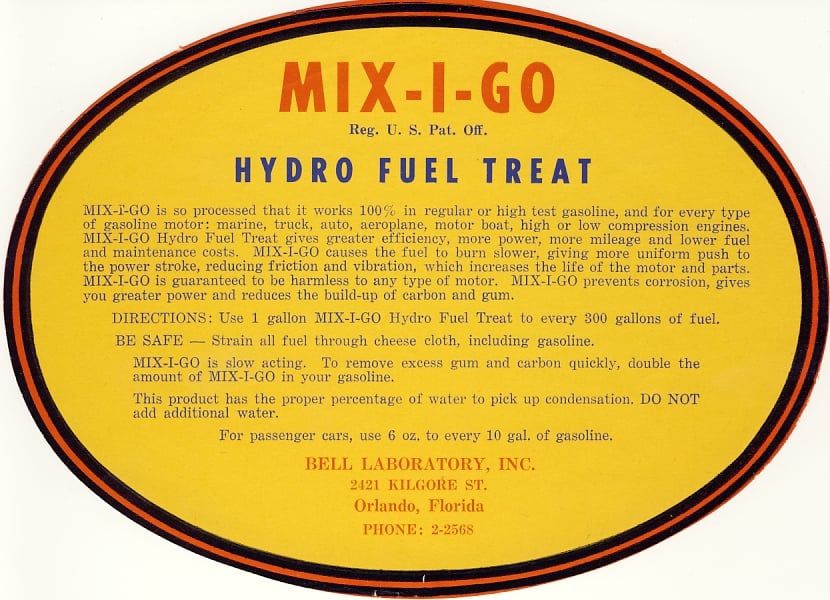The 12 Days of Mix-I-Go: Day #6 - The Faces of Mix-I-Go
Since Mix-I-Go was developed way back in 1927, you might expect its look to have changed a bit over the years.
1 min read
Bell Performance : Dec 21 2011

Many people don't know that you can't just sell anything out on the street and claim it's a fuel additive to put in your car.
 There's actually a registration process that is mandated by law that requires companies like ours to submit an additive's formula to the EPA for "approval". While this may sound like just more government interference, it's actually a good thing to protect consumers from unscrupulous business people. Because we all know nobody would try to sell snake oil, right?
There's actually a registration process that is mandated by law that requires companies like ours to submit an additive's formula to the EPA for "approval". While this may sound like just more government interference, it's actually a good thing to protect consumers from unscrupulous business people. Because we all know nobody would try to sell snake oil, right?
Speaking of snake oil, this EPA approval process isn't really about the EPA verifying that an additive does what it claims. It's much more about making sure an additive won't destroy your engine. The EPA looks for unusual things in the formula which aren't normally found in gasoline - stuff like heavy metals that would cause engine damage.
What happens if somebody puts together a witch's brew and starts selling it as the latest and greatest fuel miracle without first registering it? If they get caught, they're looking at big fines or even jail time.
Mix-I-Go has always been "EPA-registered" - just another reason why drivers have put their trust in Mix-I-Go since way back in 1927.

Since Mix-I-Go was developed way back in 1927, you might expect its look to have changed a bit over the years.

Back in 1927, Robert Bell figured out how to suspend water in fuel and developed his Mix-I-Go formulation. It wasn't too much later that, of all...

Robert Bell finally finished development work on Mix-I-Go in 1927. Unlike his previous development (O-M-I-GO 76), Mix-I-Go was a multi-function...